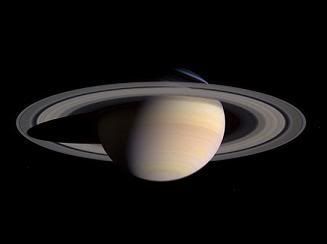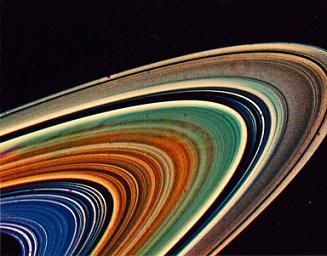Post by glactus on Feb 23, 2008 2:29:35 GMT

Beautiful Saturn
Saturn is now at its best in our late-winter sky. It appears below and to the left of the conspicuous "sickle" or backwards question-mark pattern of stars marking the head and mane of the constellation of Leo, the Lion.
It will arrive at opposition to the sun Feb. 24, when it lies on the opposite side of the sky from the sun; rising as the sun sets, reaching its highest point in the southern sky at midnight and setting as the sun rises.

Lord of the rings
In small telescopes, the rings surprise even veteran observers with their chilling elegance even though it is expected. Certainly they will delight anyone this winter who received a telescope as a holiday gift. Any telescope magnifying more than 30 power will show them.
By the late summer of 2009, there will come a period of time when the rings will appear to vanish, as they will be turned exactly edgewise to us.
Some Saturn statistics
At an average distance of 886 million miles (1.43 billion km.) from the sun, or about twice as far away as Jupiter, Saturn goes around the sun once in 29.5 Earth-years. Second only to Jupiter in size at 74,900 mi (120,500 km), it's more than nine times the size of our Earth. Like Jupiter, it's wrapped in thick clouds which run in parallel bands across its disk.
At last count, Saturn has 61 satellites; the largest one, Titan, appears as a star of eighth magnitude and appears to orbit Saturn in about 16-days.
But the really impressive feature of Saturn is its famous ring system.

credits:
images: Saturn: Wingmakers.co
www.wingmakers.co.nz/The%20planet%20Saturn.html
Saturn Rings:nasa.gov
solarsystem.nasa.gov/planets/profile.cfm?Object=Saturn&Display=Rings
text: This is part text only. See image, full text and all scientists involved at space.com
www.space.com/spacewatch/080222-ns-saturn.html
Article credit:Joe Rao SPACE.com Skywatching Columnist




